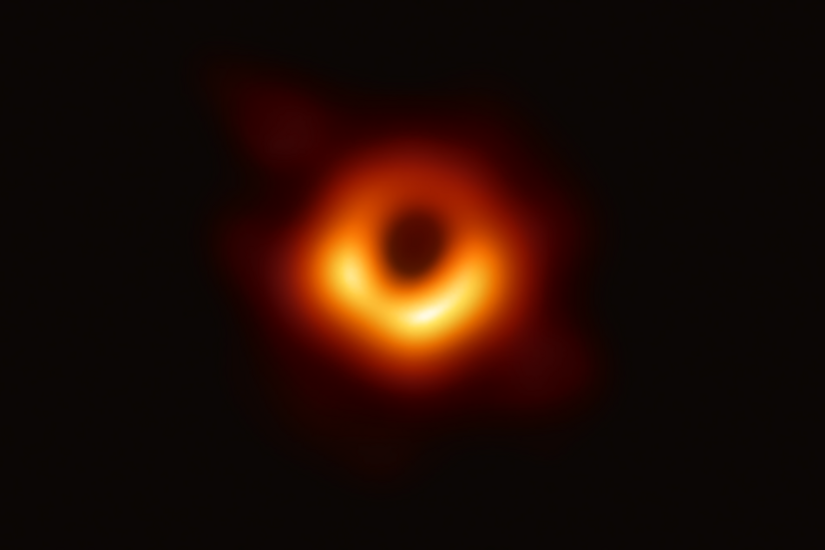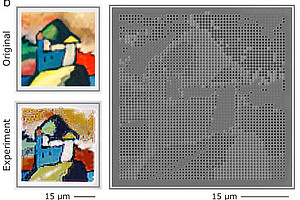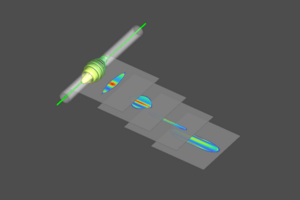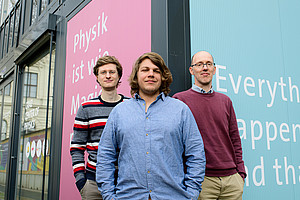The Nobel Prize for Physics 2020 will be awarded to Prof. Sir Roger Penrose for the discovery that black hole formation is a robust prediction of the general theory of relativity, and to Profs. Reinhard Genzel and Andrea Ghez for the discovery of a supermassive compact object, compatible with a black hole, at the center of our galaxy.
It is less than forty years ago that Black Holes were considered as obscure mathematical artefacts of General Relativity, however, nowadays their existence is generally assumed. It is even speculated that they appear in very large numbers, especially in the center of large galaxies. The largest amongst them are the most powerful energy-converting "engines" in the universe.
The prediction and discovery of Black Holes is an outstanding example how the precise formulation of a basic aspect of physics (here: the principle of relativity), the following mathematically exact formulation of a theory (here: Einstein's General Relativity as a geometric theory of gravitation), and their mathematical consequences (here: Penrose's singularity theorems) condense to a prediction far beyond our every-day experiences (here: Black Holes), which then in turn is verified experimentally and/or observationally (here: the discovery of supermassive compact object at the center of our galaxy).
First to the basics, the principle of relativity: This term has been coined in its today's meaning by the Austrian physicist and philosopher Ernst Mach. Already in his time in Graz (1864 - 1867) Mach began to raise deep-lying objections against Newton's view of the world. Hereby, Mach was not doubting the validity of Newton's equation, it was much more the reasoning for Newton's axioms which was in his focus. In the introduction to his book on Theoretical Mechanics (published 1883) he has been arguing convincingly that it is not necessary to relate inertia to a special absolute space, and that it is sufficient to describe any kind of physics by only and exactly only relative motions of physical objects.
Mach's way of arguing had great impact on the young Einstein. It was this way of seeing physics which allowed him, as described in his 1905 published article "On the motion of charged bodies", to generalise recently before published ansaetze by Lorentz and Poincaré such that his theory of frames moving relative to each other is able the explain the negative result of the experiment by Michelson and Morley. This article marked the birth of what we call today Special Relativity (a name also used by Einstein already a few years after this article had been published). Einstein then developed in restless 10 years his theory of General Relativity guided by nothing else than a critical analyses of the available experimental facts and the requirement that the principle of relativity is general. His efforts culminated in the publication of the field equation named after him in November 1915, i.e., a 105 years ago.
Already in 1916 Schwarzschild published a solution of Einstein's equation containing unexpected aspects: First, there was a singularity, and second, for distances to the singularity smaller than a certain radius (which is called today Schwarzschild radius) the solution lacked a physical interpretation, at least at first sight.
In 1939 Oppenheimer and Snyder succeeded in elucidating the meaning of the Schwarzschild radius by studying the collapse of an interstellar cloud, respectively, a star: As soon as all matter is concentrated in a region within the Schwarzschild radius all communication of this matter with a distant observer is shut off, only the gravitational field remains to be seen. Thus it became evident that some solutions to Einstein's equation contain an event horizon: Nothing can escape from behind the event horizon, even not light.
Only decades later the name "Black Hole" for these kind of objects with an event horizon became usual. It was Wheeler, who asked on a conference in 1967 the auditorium, whether somebody can suggest something more to the point than "gravitationally completely collapsed object" as a name for these objects. An unknown participant recapitulated the notion "Black Hole" which has been used a few years earlier by the science journalist Ewing. From then on the name has been used by everybody in the field.
It was in 1964, and thus a few years before Wheeler's baptising of these objects as Black Holes took place, when Penrose became interested in the question whether the considerations by Oppenheimer and Snyder are related to only one and maybe even irrelevant example for such a type of solution of Einstein's equation. Or was the collapse of a very massive star ending up inevitably in a Black Hole? The key concept has been the one of trapped surfaces which allowed Penrose to prove the first of the singularity theorems. The physical consequences have been judged by Penrose himself so dramatically that he called the existence of singular solutions of Einstein's equation the largest crisis of Theoretical Physics in the twentieth century. And, as matter of fact, many approaches to unify General Relativity and Quantum Theory start from the attempt to avoid such singularities.
However, it has to be noted that Penrose's proof made the existence of Black Holes as solutions of Einstein's equation compelling.
Nevertheless, in the sixties and seventies most astrophysicists and astronomers had been convinced that Black Holes, if they existed at all, are very exotic and rare objects.
When adaptive optics had been implemented in 2000 in the Keck Observatory and in ESA's Very Large Telescope the research groups of Profs. Ghez and Genzel (who installed also further technical improvements) measured precisely the motion of stars very close to the center of our galaxy. These stars' orbits leave no doubt: There, in the center of the galaxy, exists a very compact object with a mass of more than four million solar masses. And, especially, all observations are in agreement with this object being a Black Hole.
To summarise, Penrose, by virtue of his mathematical proof, and Ghez and Genzel, by their observations, have changed for ever our picture of the universe. We congratulate them to being awarded the Noble prize, it is well-deserved!




